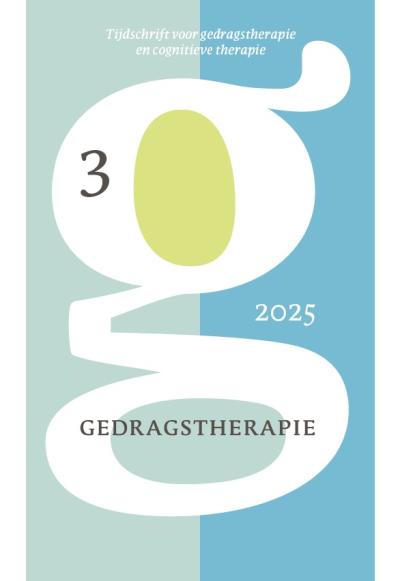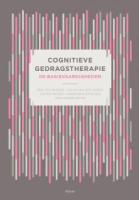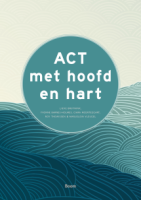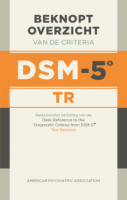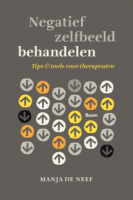Inhoud
Ontevreden over uw lichaam? Voor de spiegel! En dan? Exposure aan wat eigenlijk?
Samenvatting
Mensen met eetstoornissen zijn vaak intens ontevreden over hun lichaam, niet zelden hebben ze een enorme afkeer van het eigen lijf. Uit studies naar de effectiviteit van behandelingen blijkt dat aanhoudende lichaamsontevredenheid aan het einde van een behandeling de kans op terugval in het gestoorde eetgedrag vergroot. Het is dus zaak om iets aan die ontevredenheid te doen. Wij gaven jonge vrouwen die ontevreden waren met hun lichaam een ‘lekker-in-je-vel' training, die bestond uit herhaalde langdurige blootstelling aan het eigen bijna blote lichaam in een spiegel. De aandacht van de helft van de patiënten werd daarbij uitsluitend gericht op haar aantrekkelijkste lichaamsdelen (positieve exposure) terwijl de aandacht van de andere helft juist werd gericht op haar onaantrekkelijkste lichaamsdelen (negatieve exposure). Ons idee was dat het automatiseren van aandacht voor mooie lichaamsdelen tijdens positieve exposure tot betere resultaten (meer lichaamstevredenheid) zou leiden dan de habituatie aan onaantrekkelijke delen tijdens negatieve exposure. Of dit ook zo uitpakte leest u hieronder.
Literatuur
- Beck, A.T., Steer, R.A., & Brown, G.K. (2002). Beck Depression Inventory - Second Edition. Nederlandse vertaling: Does, A.J.W., van der (2002). Handleiding bij de Nederlandse versie van Beck Depression Inventory - second edition (BDI - II - NL). The Psychological Corporation/Swets Test Publisher: San Antonio, TX/ Lisse, NL.
- Bouman, T.K. (1999). Mijn Uiterlijk Vragenlijst. Rijksuniversiteit Groningen.
- Butters, J.W., & Cash, T. (1987) Cognitive behavioral treatment of women's body-image dissatisfaction. Journal of Consulting and Clinical Psychology, 55, 889-897.
- Delinsky, S.S., & Wilson, G. T. (2006). Mirror exposure for the treatment of body image disturbance. International Journal of Eating Disorders, 39, 108-116.
- Fairburn, C.G., & Beglin, S.J. (1994). Assessment of eating disorders: Interview or self report questionnaire? International Journal of Eating Disorders, 16, 363-370.
- Fernández, F., & Vandereycken, W. (1994). Influence of video confrontation on the self evaluation of anorexia nervosa patiënts: a controlled study. Eating Disorder Journal of Treatment and Prevention, 2, 135-140.
- Grant, J.R., & Cash, T. F. (1995). Cognitive-behavioral body image therapy: comparative efficacy of group and modest-contact treatments. Behavior Therapy, 26, 69-84.
- Hilbert, A., Tuschen-Caffier, B., & Vögele, C. (2002). Effects of prolonged and repeated body image exposure in binge-eating disorder. Journal of Psychosomatic Research, 52, 137-144.
- Jansen, A. (2001). Towards effective treatment of eating disorders: Nothing is as practical as good theory. Behaviour Research and Therapy, 39, 1007-1022.
- Jansen, A., Nederkoorn, C., & Mulkens, S. (2005). Selective visual attention for ugly and beautiful body parts in eating disorders. Behaviour Research and Therapy 43, 183–196.
- Jansen, A., Smeets, T., Martijn, C., & Nederkoorn, C. (2006). I see what you see: the lack of a self-serving body image bias in eating disorders. British Journal of Clinical Psychology, 45, 123 - 135.
- Jansen, A., Bollen, D., Tuschen-Caffier, B., Roefs, A., Tanghe, A., & Braet, C. (2008). Mir ror exposure reduces body dissatisfaction and anxiety in obese adolescents: A pilot study. Appetite, 51, 214-217.
- Key, A., George, C. L., Beattie, D., Stammers, K., Lacey, H., & Waller, G. (2002). Body image treatment within an inpatiënt program for anorexia nervosa: The role of mirror exposure in the desensitization process. International Journal of Eating Disorders, 31, 185-190.
- Moreno-Domínguez, S., Rodríguez-Ruiz, S., Fernández-Santaella, M.C., Jansen, A., & Tuschen-Caffier, B. (2012). Pure versus guided mirror exposure to reduce body dissatisfaction: A preliminary study with university women. Body Image, 9, 285 – 288.
- Mulkens, S., & Jansen, A. (2009).Mirror gazing increases attractiveness in satisfied, but not in dissatisfied women: A model for body dysmorphic disorder? Journal of Behavior Therapy and Experimental Psychiatry, 40, 211-218.
- Reas, D.L., Whisenhunt, B., Netemeyer, R., & Williamson, D.A. (2002). Development of the Body Checking Questionnaire: A self-report measure of body checking behaviors. International Journal of Eating Disorders, 31, 324-333.
- Rekkers, M.E. (2005). Opvallen of afvallen? Spiegel- en video-exposure ter versterking van positieve lichaamsbeleving bij patiënten met eetstoornissen. In, J. de Lange & R. Bosscher (red.), Psychomotorische therapie in de praktijk. (pp. 25-41). Nijmegen: Cure & Care Publishers.
- Rosen, J.C., Reiter, J., & Orosan, P. (1995). Cognitive-behavioral body image therapy for body dysmorphic disorder. Journal of Consulting and Clinical Psychology, 63, 263-269.
- Rosen, J.C, Strebnik, D., Saltzberg, E., & Wendt, S. (1991). Development of a Body Image Avoidance Questionnaire. Psychological Assessment: A Journal of Consulting and Clinical Psychology, 3, 32-37.
- Rosenberg, M. (1965). Society and the adolescent self-image. Princeton, NJ: Princeton University Press.
- Shafran, R., Lee, M., Payne, E., & Fairburn, C.G. (2007). An experimental analysis of body checking. Behaviour Research and Therapy, 45, 113-121.
- Smeets, E., Jansen, A., & Roefs, A. (2011). Bias for the (un)attractive self: On the role of attention in causing body (dis)satisfaction. Health Psychology, 30, 360 - 367.
- Stewart, T. M. (2004). Light on body image treatment: Acceptance through mindfulness. Behavior Modification, 28, 783–811.
- Stice, E., & Shaw, H.E. (2002). Role of body dissatisfaction in the onset and maintenance of eating pathology. A synthesis of findings. Journal of Psychosomatic Research, 53, 985-993.
- Tuschen-Caffier, B., Vögele, C., Bracht, S., & Hilbert, A. (2003). Psychological responses to body shape exposure in patiënts with bulimia nervosa. Behaviour Research and Therapy, 41, 573–586.
- Vocks, S., Legenbauer, T., Wächter, A., Wucherer, M., & Kosfelder, J. (2007). What happens in the course of body exposure? Emotional, cognitive and physiological reactions to mirror confrontation in eating disorders. Journal of Psychosomatic Research, 62, 231239.
- Watson, D., Clark, L.A., & Tellegen, A. (1988). Development and validation of brief measures of positive and negative affect: The PANAS scales. Journal of Personality and Social Psychology, 54, 1063-1070.
 © 2009-2025 Uitgeverij Boom Amsterdam
© 2009-2025 Uitgeverij Boom Amsterdam
De artikelen uit de (online)tijdschriften van Uitgeverij Boom zijn auteursrechtelijk beschermd. U kunt er natuurlijk uit citeren (voorzien van een bronvermelding) maar voor reproductie in welke vorm dan ook moet toestemming aan de uitgever worden gevraagd:
Behoudens de in of krachtens de Auteurswet van 1912 gestelde uitzonderingen mag niets uit deze uitgave worden verveelvoudigd, opgeslagen in een geautomatiseerd gegevensbestand, of openbaar gemaakt, in enige vorm of op enige wijze, hetzij elektronisch, mechanisch door fotokopieën, opnamen of enig andere manier, zonder voorafgaande schriftelijke toestemming van de uitgever.
Voor zover het maken van kopieën uit deze uitgave is toegestaan op grond van artikelen 16h t/m 16m Auteurswet 1912 jo. Besluit van 27 november 2002, Stb 575, dient men de daarvoor wettelijk verschuldigde vergoeding te voldoen aan de Stichting Reprorecht te Hoofddorp (postbus 3060, 2130 KB, www.reprorecht.nl) of contact op te nemen met de uitgever voor het treffen van een rechtstreekse regeling in de zin van art. 16l, vijfde lid, Auteurswet 1912.
Voor het overnemen van gedeelte(n) uit deze uitgave in bloemlezingen, readers en andere compilatiewerken (artikel 16, Auteurswet 1912) kan men zich wenden tot de Stichting PRO (Stichting Publicatie- en Reproductierechten, postbus 3060, 2130 KB Hoofddorp, www.cedar.nl/pro).
No part of this book may be reproduced in any way whatsoever without the written permission of the publisher.
Inloggen VGCt en VVGT
Leden van de VGCt en de VVGT loggen in via de site van hun vereniging. Als u op die site bent ingelogd als lid, vindt u daar een button naar het Tijdschrift voor Gedragstherapie.
English
Behavioral Therapy: Journal for Behavioral Therapy and Cognitive Therapy ISSN 0167-7454
Information in English can be found here.



